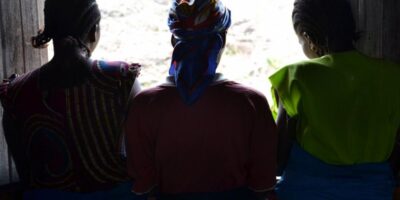Showers are becoming increasingly rare in the Artibonite department. Planters in the region confirm an abnormal drought. They say they fear the worst for the future of national rice
The septuagenarian curses the irregularity of the rains. « It’s getting hotter and hotter at the fourth section of Savane à Roche, » complains Dieuseul Siméon, a native of the Artibonite department.
« In the middle of the rainy season, two to three weeks can go by without a single drop of rain, » Simeon reveals.
Empty canals and drying up land are multiplying throughout the department. As for seeds, « when they are not scorched by the sun, they do not yield good harvests, » continues the father of ten children.
Hector Pierre-Louis, a large rice planter and owner of ten tiles of land, speaks of a « drought ». The National Oceanic and Atmospheric Administration (NOAA) agrees. In its climate forecasts for the period from September 23 to 29, 2021, the U.S. government’s scientific institution reports an abnormal drought observed in the Artibonite department. And if effective measures are not implemented to counteract this phenomenon, all local rice varieties are at risk of extinction in this area, according to experts.
Worrying situation
From Jean Denis to the fourth commune of Marchand, the land is not worked at all because of the lack of water. « In the old days, » recalls Hector Pierre-Louis, « we could count on both the rain and the canals that the Organisme pour le développement de la Vallée de l’Artibonite knew how to scrub. »
But those days are over, for the past three years.
Read Also: Artibonite: an agricultural area turned into a valley of crime
« This year is the worst of all, » says farmer Marie Anna Télémaque. Supposed to fall between April and May, the rain that Telemachus was waiting for to sow his rice, is noticed in July. « Not only was the planting late, the rain didn’t fall as expected. Only land that conserves water long enough has been able to produce satisfactory harvests. »
For his part, Hector Pierre-Louis regretfully abandoned several of his ten tiles located in Segui, the second communal section of Petite-Rivière de l’Artibonite. The Vodouant priest says he cannot afford to plant rice on the abandoned plots because of the lack of water. However, he plans to plant peas there next December.
Climate change is causing droughts and extreme weather events.
The situation is not that different at Savane à Roche. Dieuseul Siméon, who mainly planted maize on his land, is thinking of taking a new direction in terms of planting. « Just like me, » the old man reveals, « some residents have let bayahondes and other species of trees grow on their land to make charcoal. But it’s not very economical. Four years of tree growth is not even enough to take care of your family for a year. »
All the farmers in the community continue to try new tactics, but water scarcity continues to make it difficult for them.
Climate Change in Haiti
Climate change caused by the dumping of huge quantities of greenhouse gases into the atmosphere by humans is at the top of the list of preferred hypotheses to explain the drought that is raging in the Artibonite. Between 1999 and 2018, Haiti ranked third in the list of the ten countries most affected by extreme weather events, according to the German NGO « Germanwatch », a global reference in the fight against global warming.
Climate change is causing droughts and extreme weather events.
However, it remains difficult to establish a direct link between climate change and the drought observed in Artibonite. « Unless you rely on statistical data over a long period of time, you can’t say that a drought is a direct result, » says Odré Valbrun, a specialist in climate mitigation and change.
However, NOAA’s recent climate forecasts are enough to sound the alarm, Valbrun said.
The social consequences are dramatic. « The problem with drought is food insecurity, » says urban planner Rose-May Guignard.
According to the latest predictions by the Food Security Cluster (FSC), of the estimated 15% of the population in phase 4 of the Consumer Price Index (CPI), Artibonite is at the top of the list.
Drought, food insufficiency and climate change in general are therefore all linked.
Alteration of production
The other risk is the disappearance of local rice varieties. « TCS, La Crête, Sheila, Ti malice… Hector Pierre-Louis takes pleasure in mentioning the different types of rice he grows, which are also a credit to the Artibonite. They are also « very demanding in terms of preparation, » he notes. They need fertilizer at specific intervals as well as a lot of water, which is their staple food. »
When these conditions are met, the harvest can only be excellent. The rice farmer since 1982 remembers the time when he could harvest between 65 and 70 barrels of rice on a tile of land. Today, with the growing drought being the main culprit, he says he is struggling to reach about twenty barrels. « And we still have to make sure that this tile of earth is well worked to achieve this. »
Read also: Haiti under the grip of climate change
Marie Anna Telemachus confirms this. It’s been a long time since she counted the barrels of rice harvested by the tile. Added to this is the quality, which is no longer the same, according to the two growers. « We don’t have the same type of rice anymore, » they reveal. A fact that is beginning to be seriously worrying.
The great planter Pierre-Louis confirms this phenomenon. According to the professional, only TCS still retains some of its original nature. The others, like rice The ridge is not what it used to be.
« You can still plant and harvest rice that can be eaten without fertilizer, but not without water, » the man from Segui adds.
Agronomist Odré Valbrun points out that rice does indeed thrive in conditions of abundant water. « In the event of a prolonged drought that can lead to the desertification of the planting area, this can affect not only the harvest, but also lead to the disappearance of the variety. » In other words, if the problem persists in the long term, the different types of rice in Artibonite are likely to disappear.
Agriculture, a life
Rice plantations are a source of income for thousands of farmers, mainly in the north of the country.
By devoting himself to farming, Hector Pierre-Louis has not only fed himself, he has also made his dreams come true. The story of the construction of his first house in Port-au-Prince has become one of his favourites.
« When the engineer gave me the plan for my house, » says Pierre-Louis, « he told me it was going to cost me 300,000 gourdes. Just by working as a rice farmer and seller, I was able to build my house. ». But what makes him proudest of all in history is that a pot of rice sold for less than a gourde in 1982. The profitability of agriculture is therefore no longer to be proven for Pierre-Louis, who has been engaged in it for almost four decades.
But since the beginning of the drought, sales have dropped drastically. Added to this, insecurity is paralyzing activities. « Fearing for their lives, customers from other departments can no longer travel to come and buy, » says Marie Anna Télémaque.
The need for care
In the current situation, concrete actions must be taken to relieve farmers. As water is the primary problem, « we need to find appropriate techniques to supply it to the areas concerned, » warns Odré Valbrun. The next step is to think about not only planting seedlings, but also adopting seed and gene conservation strategies to prevent the disappearance of different plant species. »
Agronomist Odré Valbrun is currently conducting a study on how climate change can affect the distribution areas of several species. He suggests that rice is far from the only endangered species.
You can still plant and harvest rice that can be eaten without fertilizer, but not without water
« When you try to simulate [predicted] [climate change] in the context of Haiti, you understand that you may end up in situations where areas that used to produce coffee are no longer able to produce it. » This is because of the excessive heat that will be generated by climate change, for which, warns urban planner Rose-May Guignard, « we are not ready ».
Cover image : A person shows grains of rice in the palm of their hand. | © freepik
Keep in touch with AyiboPost via:
► Our channel Telegram: click here
► Our Channel WhatsApp: click here
► Our Community WhatsApp: click here







Comments